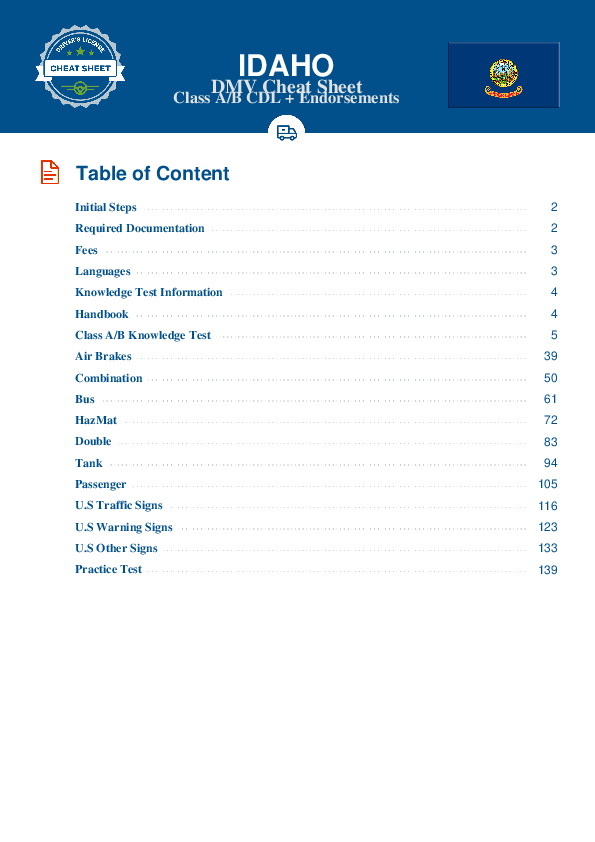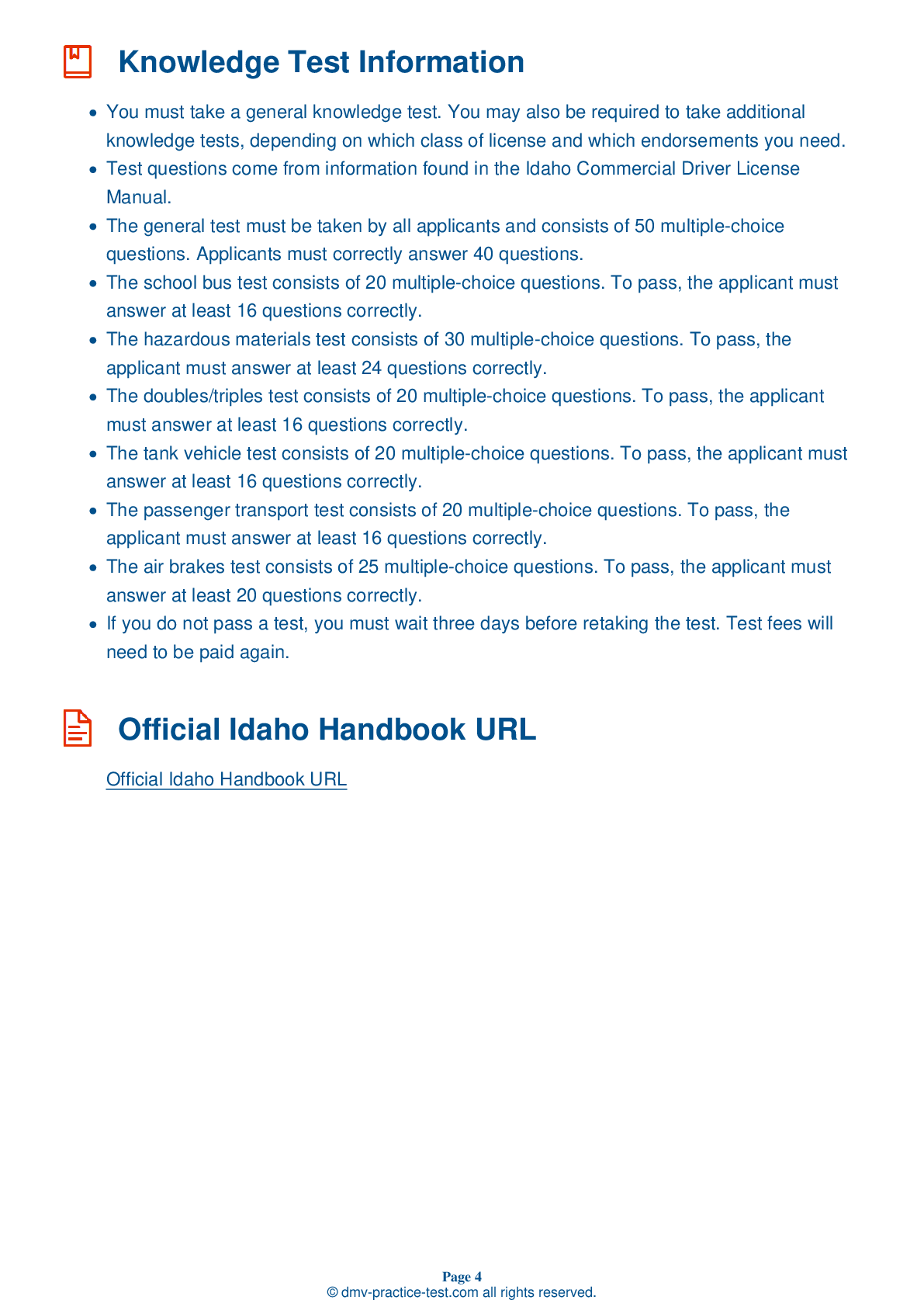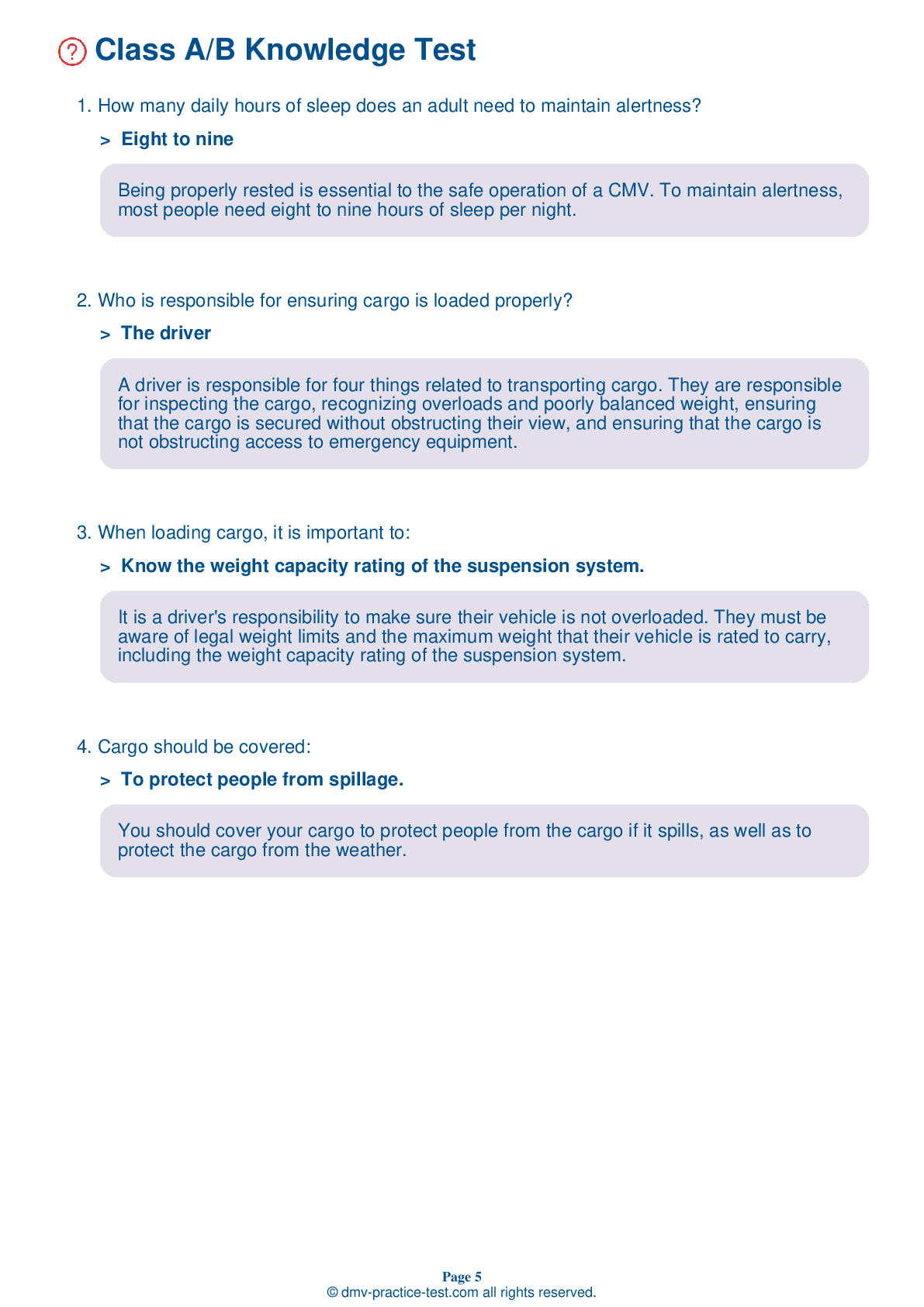Tank Endorsement Test | Idaho 2025 #2 Page 3 of 3
Train for FREE with our Idaho tank endorsement practice test online. The official exam test consists of several obligatory parts, with all of them checking your knowledge of different blocks of road rules. If you need to obtain a ID tank license in 2025, practice as much as possible. Free sample tests published on our website will help you check and improve your knowledge and boost your grades. Please bear in mind that DMV requirements for issuing a CDL tank vehicle endorsement may vary from state to state.
15 . Which of the following is not an example of a distracted person who should concern motorists?
You should be cautious when you are near people who are not paying attention to the road. Drivers and pedestrians who are talking to someone may be distracted by the conversation and not fully paying attention to the road. Workers on or near the road may not be paying attention to traffic because they are focused on their work, and can themselves also be a distraction to drivers.
16 . If a shipping paper describes both hazardous and non-hazardous materials:
If a shipping paper lists both hazardous and non-hazardous materials, the hazardous materials must be entered first.
17 . In general, before loading or unloading any flammable liquids, an engine should be:
Before loading or unloading a tank with flammable liquids, you should turn off the engine, unless running the engine is necessary to operate a pump. Ground the tank before opening the filling hole and maintain the ground until after closing the filling hole.
18 . Trailers built before ____ are not required to have spring brakes.
Trailers built before 1975 are not required to have spring brakes. When parking a trailer without spring brakes, be sure to use wheel chocks to prevent the trailer from rolling.
19 . If a tank is found to be leaking, the driver should:
Transporting liquids or gases in a leaking tank is both unsafe and against the law.
20 . Carrying liquids in a leaking tank:
It is illegal to transport liquids or gases in a leaking tank. Doing this could be dangerous and create the need for a costly clean-up.
See the exact questions that will be on the 2025 Idaho DMV exam.
99.2% of people who use the cheat sheet pass the FIRST TIME
Lillian MCcranie explains how our CDL study guide was helpful in passing the exam and recommends it to everyone.
Cameron tells us how he purchased the CDL exam, and found it to be a useful tool which helped him pass the exam and find a job.



